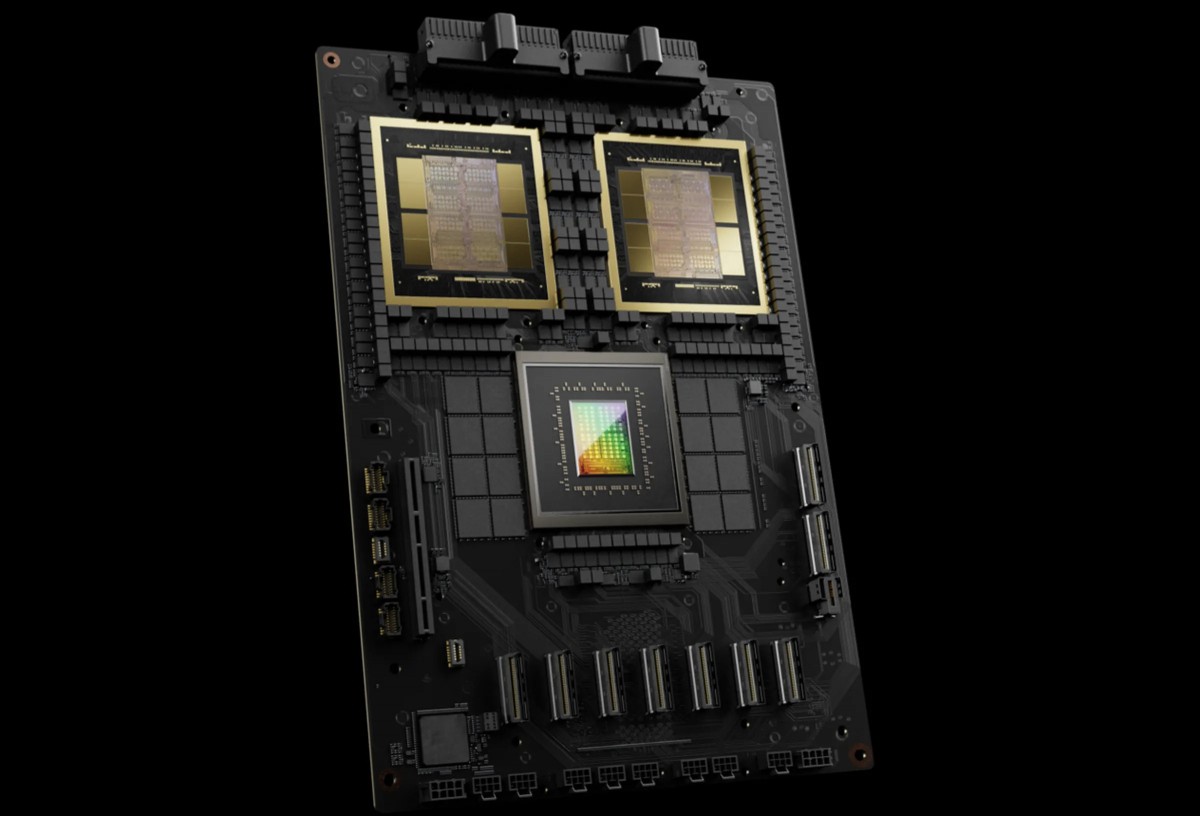


NVIDIA's highly anticipated B100 AI GPU faces significant setbacks as design flaws halt its production and prompt a replacement with lower cost and performance. The company admits to low yields and plans to re-spin the B200 tile to improve production and meet its Q4 2026 release. Analysts predict a 3-month delay and prioritize the revised B200A for hyperscalers, effectively scrapping the B100. With a passion for AI hardware, Anthony Garreffa from TweakTown predicts the impact of these developments on NVIDIA's profitability and reputation.
Background:
NVIDIA's B100 AI GPU was highly anticipated as a groundbreaking advancement in artificial intelligence hardware. However, recent developments have cast doubt on its timely release and overall performance.
Design Flaws and Production Halt:
In a recent announcement, NVIDIA revealed design flaws in the B100 tile that have halted its production. These flaws have resulted in low yields, leading to difficulties in meeting the GPU's targeted performance and release schedule.
Revised B200 and B200A:
To address the production issues, NVIDIA plans to re-spin the B200 tile, which will result in a revised GPU called the B200A. Analysts predict that the release of the B200A will be delayed by approximately three months compared to the original B100 timeframe. NVIDIA has also prioritized the B200A for hyperscalers, effectively scrapping the B100.
Impact on Profitability and Reputation:
The production halt and revised design have raised concerns about NVIDIA's profitability and reputation. Analysts predict that the delay in the B100's release will impact NVIDIA's revenue in the near term. Additionally, the design flaws and subsequent redesign could damage NVIDIA's reputation as a leader in AI hardware.
1. What caused the production halt of the NVIDIA B100? Answer: Design flaws in the B100 tile resulted in low yields, necessitating a re-spin of the tile.
2. What is the expected release date of the revised B200A? Answer: Analysts predict a three-month delay compared to the original B100 release, which was targeted for Q4 2026.
3. What is the impact of the design flaws on the B100's performance? Answer: The design flaws in the B100 tile have not been publicly disclosed, so their impact on performance is unknown. However, the revised B200A is likely to have lower cost and performance compared to the original B100 design.
4. How will the production halt affect NVIDIA's profitability? Answer: The delay in the B100's release is likely to impact NVIDIA's revenue in the near term, as the B100 was expected to be a major revenue driver.
5. What are the long-term implications of the design flaws and redesign for NVIDIA's reputation? Answer: The design flaws and subsequent redesign could damage NVIDIA's reputation as a leader in AI hardware, as customers may question the reliability and performance of its products.

On World Tsunami Awareness Day, scientists are highlighting the importance of traditional knowledge in predicting and preparing for tsunamis. Coastal communities have long relied on observing animal behavior to sense environmental changes and predict natural disasters. This technique has proven effective in areas without advanced warning systems. Scientists are now studying these natural warning signs to improve early detection and save lives in vulnerable regions.

Every year, India celebrates the birth anniversary of the renowned physicist CV Raman, who is known for his groundbreaking work on light scattering and the Raman Effect. Despite receiving numerous offers to work in Western labs after winning the Nobel Prize in Physics, Raman remained committed to his belief in fostering a strong scientific culture in India and mentoring future scientists. His discovery of the Raman Effect continues to be relevant and widely used in various fields today, serving as a testament to the quantum nature of light and the energy levels in molecules.

As meditation gains popularity as a mental well-being tool, concerns about potential side effects have emerged. A recent study by a team of researchers from the University of Melbourne delved into the prevalence of adverse experiences among meditators in the United States. By recruiting nearly 900 adults from various meditation skill levels, the study aimed to provide more accurate estimates of how common these side effects are and what factors may contribute to experiencing them. The findings highlight the need for clearer reporting standards in future research on meditation.

Prime Minister Narendra Modi launched a groundbreaking research, development and innovation scheme that will provide a boost to the flourishing ecosystem of innovation in India. In his address at the Emerging Science, Technology and Innovation Conclave, PM Modi highlighted the crucial role of science and technology in driving transformation and emphasized on India's significant progress in the field. He also acknowledged the remarkable achievement of India's women's cricket team and expressed confidence that their success would inspire the country's youth. Attendees included renowned scientists, innovators, and distinguished guests from both India and abroad.

Indian Prime Minister Narendra Modi inaugurated the Emerging Science and Technology Innovation Conclave (ESTIC) 2025 and launched the Rs 1 lakh crore Research Development and Innovation (RDI) Scheme Fund. The scheme aims to strengthen the private sector-driven research and innovation ecosystem in the country and has a total outlay of Rs 1 lakh crore over 6 years. ESTIC 2025, gathering over 3,000 participants, focuses on 11 critical thematic areas including Artificial Intelligence, Quantum Science and Technology, and Space Technologies, providing opportunities for collaboration and reinforcing India’s science and technology ecosystem.

In this edition of Health360, a renewed debate over the alleged link between vaccines and autism is sparked by tech mogul Sridhar Vembu's endorsement of a questionable study. Despite reassurances from the medical community backed by data from the WHO, doubts continue to persist, leading to potential harm to public health. The program also delves into the alarming rise in back pain cases in India and explores new treatments.

In an effort to fight the ongoing air pollution crisis, Delhi conducted its first-ever official cloud seeding operation led by IIT Kanpur. The operation involved a small aircraft dispersing specially designed chemical flares into the atmosphere to create rain. While experts say rainfall could occur within 15 minutes to 4 hours, the actual timeframe depends on various factors such as wind direction and moisture content. If successful, the government plans to continue the operation in the coming days.

In the quest for stronger, luscious hair, we often overlook the importance of nurturing the roots. Fortunately, Ayurveda has long stressed the significance of this practice, which has now been backed by modern science. Studies have shown that herbs like Bhringraj and Amla can activate hair follicles, promoting new growth and delaying greying. Fenugreek, Neem, Hibiscus, and Ashwagandha are also found to be beneficial in strengthening and nourishing the scalp, resulting in thicker and healthier hair.

A college student shares her personal journey of becoming a vegetarian, despite facing challenges and health concerns. She then delves into an ethics class she took, where the concept of marginal cases were discussed. Following an article by philosophy professor Alastair Norcross, she concludes that even though individual action may seem insignificant, refusing to consume factory-farmed meat holds moral significance due to the potential to prevent immense suffering for animals.

On October 24, the global community commemorates World Polio Day to honor the legacy of Dr. Jonas Salk and the efforts of countless individuals and organizations in the fight against polio. This highly contagious and potentially deadly disease, once a widespread epidemic, is now largely preventable thanks to the development of a life-saving vaccine. India's successful eradication of polio serves as a testament to the importance of strong vaccination programs and collaborations in public health initiatives.